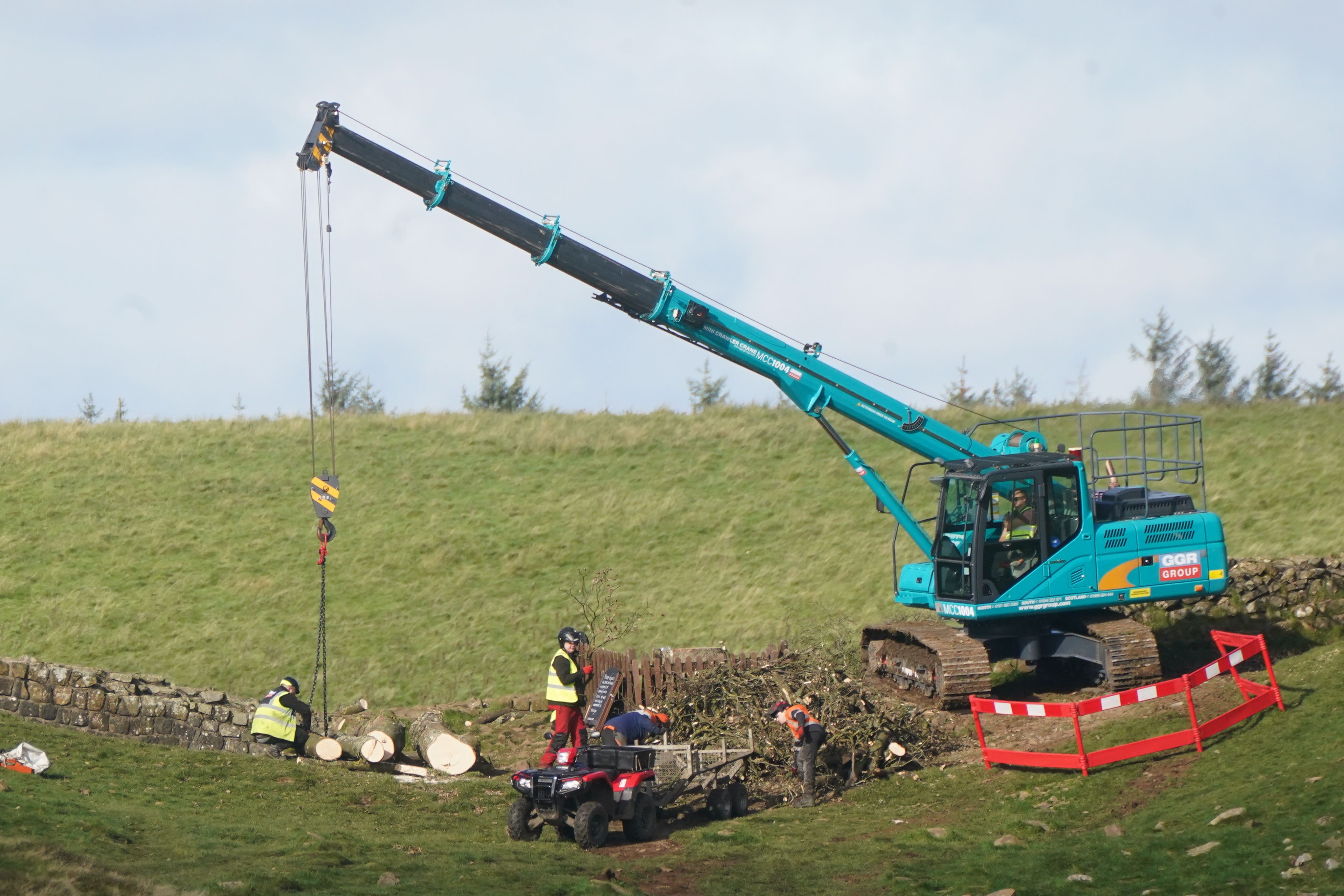Two men arrested in police investigation into felling of the world-famous Sycamore Gap tree
The 300-year-old tree was cut down overnight in a shocking act of vandalism
Two men in their 30s have been arrested and bailed by officers investigating the felling of the world-famous Sycamore Gap tree, Northumbria Police has said.
The tree in Northumberland, believed to have been about 300 years old, was cut down overnight between September 27 and 28 in what police believe was a deliberate act of vandalism.
Soon after the tree was felled a 16-year-old male and a 60-year-old man were arrested and later bailed.
Detective Chief Inspector Rebecca Fenney-Menzies, of Northumbria Police, said: “The loss of Sycamore Gap has been felt deeply across the community as well as further afield.

“As a force, we have seen many touching tributes from those who have detailed what this iconic landmark meant for them personally and for our region.
“We’ve been working tirelessly to identify anyone responsible and bring them into police custody and we are committed to getting justice.
“I hope this recent wave of arrests demonstrates just how much work has been undertaken by our dedicated specialist teams in what has, so far, been a very difficult and complex investigation.”
One of the most photographed trees in the country, the lone sycamore tree was situated in a dramatic dip next to Hadrian’s Wall near Crag Lough.
Its striking location resulted in it being the frequent subject of paintings and photographs, and it became an emblem for the north-east of England.

Believed to have been planted by Newcastle philanthropist and lawyer John Clayton in the second half of the 19th century, it was also known as Robin Hood Tree after it made an appearance in the 1991 Kevin Costner film.
Mr Clayton was a keen excavator of Hadrian’s Wall and was thought to have planted the tree to fill the dip on landscape which was created by glacial meltwater.
Its trunk was removed from the location on 12 October and is currently being stored in an undiclosed location, until its fate is decided.
Temporary fencing has been placed around the stump, which could “begin to sprout new shoots in time”. Seeds from the tree have also been collected and are being looked after by the National Trust’s Plant Conservation Centre.

A fundraising site has been set up, with more than £4,000 raised to help to “improve and rejuvenate” the area around the stump.
Andrew Poad, the general manager of the Roman heritage site for the National Trust, said: “Effectively, what the perpetrator has done is coppice the tree.
“So ironically they have prolonged the life of the tree.”
Mr Poad said the tree will not look the same, but is confident the stump will regrow, which is typical of sycamores.
The felling of the tree triggered an outpouring of emotion, with many suggestions on what could be done with the felled section, including making benches from the wood, a sculpture or souvenirs to sell.

